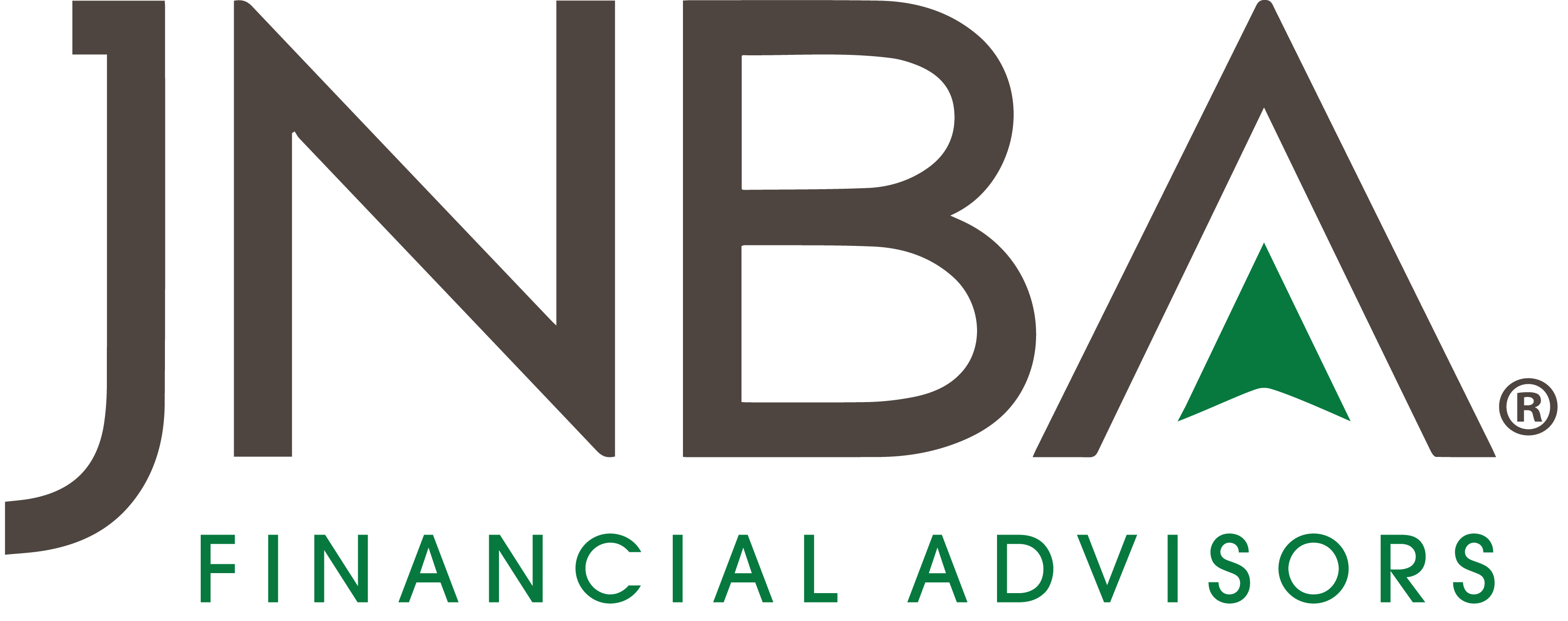At JNBA, when we construct client portfolios, our focus is always on the long-term financial plan. We recognize that each client has unique circumstances, timelines, and goals; yet our role is to align their investments to effectively support the broader objectives of their long-term portfolio. As a result, every portfolio is distinct. Even so, we still maintain a core structure of our portfolio construction that serves as a fundamental framework, balancing both return and risk objectives.
In these core portfolio strategies, we establish base allocations across a diversified range of assets. These base allocations are centered on:
- Broad Asset Classes: Stocks, Bonds, and Cash
- Sub-Asset Classes: U.S. Large Cap, U.S. Mid Cap, U.S. Small Cap, International Equities, Emerging Markets, and U.S. and International Fixed Income
These allocations are designed to offer a diversified stream of returns, encompassing both price appreciation and income generation. By spreading investments across broad asset classes, we mitigate the risk of overexposure to either the best or the worst performing asset classes. This approach aims to deliver more consistent and less volatile performance year-over-year.
In addition to our core portfolio strategies, we use various methodologies to introduce a tactical component, aiming to optimize returns or mitigate risks in response to market dynamics. These tactics are informed by a wide array of data sources including internal insights, external third-party research, and ongoing discussions within JNBA’s Investment Committee.
This process can result in adjustments to the positioning of broad asset classes (such as stocks, bonds, or cash), different tactic positioning (such as value versus growth) or specific mutual funds or exchange-traded funds (ETFs) deemed to offer improved risk/return potential over the short or long term. The overarching theme guiding our portfolios can be summarized as:
- Adapt to and incorporate market conditions, ensuring portfolios remain aligned with long-term goals and avoiding reliance on historical asset class performance.
- Seek opportunities to enhance returns by tactically adjusting allocations within different asset classes (such as stocks, bonds, and cash), as well as within sub-asset classes (like U.S. Large/Mid/Small Cap, International, and Emerging Markets), in response the current market environment.
Adjustments to Portfolio Construction
As part of our overall philosophy, the JNBA Investment Committee is committed to an ongoing process review. The onset of the pandemic brought a dramatic shift to market dynamics, compressing economic cycles into mere months compared to traditional multi-year ebbs and flows in the economy. This dynamic environment has led us to adjust our portfolio construction approach.
These adjustments represent incremental changes rather than a drastic overhaul of our portfolio structure. Nonetheless, clients will notice a few changes within their portfolios in two key areas.
The first area starts with the core portfolio, where we previously maintained a long-term static allocation to the Inflation Hedge or Real Asset category (e.g., Real Estate, Commodities, and Precious Metals). These holdings were strategically included to diversify returns and provide non-correlated performance compared to other broad asset classes such as stocks and bonds.
The overall investment landscape has shifted from a historically low interest rate environment, diminishing the yield advantage for Real Assets. Consequently, with the Federal Reserve raising Fed Funds to multi-decade highs, we have gradually adjusted our asset allocation, reducing exposure to Real Assets in favor of more traditional stocks and bonds. This strategic move allows us to capitalize on the higher interest rates associated with a growing economy.
Real Assets prove valuable in periods of market turmoil, but their long-term returns have been lower compared to stocks. Historically, stocks have outperformed Real Assets roughly three out of every four years, prompting us to incorporate them into our tactical strategies. Recognizing this, we are transitioning from a static, permanent Real Asset allocation to a more dynamic strategy, aligning with prevailing market conditions. Real Assets remain integral within long-term portfolios; however, with this shift we are poised to leverage them opportunistically.
The second area where we are making changes to portfolios is how we implement our tactical positions. We are seeking to concentrate our tactical holdings into positions that we believe offer enhanced risk-return profiles. This strategy should translate into a greater passive allocation (i.e., the use of ETFs and index funds) within each sub-asset class, accompanied by a reduction in the number of tactical holdings resulting in a higher percentage allocation to each.
This new structure ties back to our initial goals and adapts to market conditions through emphasizing passive index exposure for each sub-asset class while integrating our tactical viewpoints into the top one to three opportunities within each. These opportunities may involve specific mutual funds or ETF offering with distinct exposure from the index.
These adjustments will be done over time as we focus on potential tax consequences, with the goal that portfolio structures changes provide two key attributes:
- More consistent performance relative to market indexes and benchmarks by increasing passive exposure.
- More visibility to the implementation of our tactical investments. For example, deviations to higher allocations of stocks or bonds compared to core portfolio strategies (i.e., Balanced, Growth, etc.) or specific holdings outside of passive index investments, should highlight our tactical viewpoint of the current market environment.
How this impacts portfolios today
At the start of the year, we positioned our portfolio strategies with an overweight allocation to stocks and an underweight allocation to Fixed Income, specifically with direct S&P 500 exposure. The S&P 500 has shown strong performance since the beginning of the year, outpacing broader Fixed Income markets boosted by a solid Q4 earning season. Market attention has once again turned to the Fed, with expectations for rate cuts being pushed back later in the year. Investors are eagerly awaiting key inflation data scheduled to release in March before the Fed’s next meeting.
While these changes are modest and will take time, we understand there may be questions regarding their integration. We will continue to provide updates on this transition, including more details on our investment process and its implementation.
In all our investment decisions, the JNBA Investment Committee prioritizes identifying key themes and monitors relevant data points while continuously assessing overall performance and risk over the short and long-term. By aligning core portfolio strategies with the long-term financial objectives, we aim to deliver consistent and enhanced performance to help achieve your objectives.
As always, we appreciate the opportunity to assist you with achieving your financial and life goals. We encourage you all to please reach out to your JNBA Advisory Team with any questions.
Due to various factors, including changing market conditions and/or applicable laws, some of the content may no longer be reflective of current opinions or positions. Moreover, you should not assume that any discussion or information contained in this blog serves as the receipt of, or as a substitute for, personalized investment advice from JNBA Financial Advisors.
Please see important disclosure information at jnba.com/disclosure






